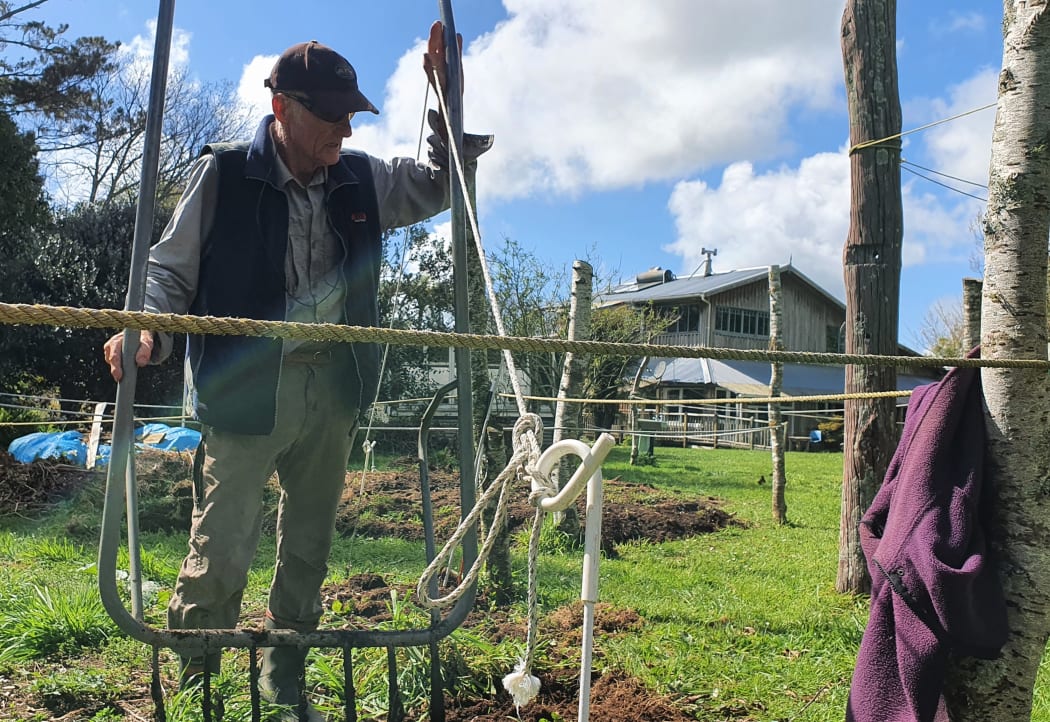This story was first broadcast in February 2022.
Ropes and posts are strategically placed around Graham Mosen's large Taranaki garden so he can continue to grow things despite not being able to see.
"No matter where I am in the garden, if I walk in any direction I should eventually hit a rope and just like the thread out of a labyrinth I'll know how to get back to base camp."
The vegetable growing area is six-sided, based on the hexagon of a beehive, with rotational planting areas within a circle and paths bounded by ropes at thigh level.
"It's designed for a blind guy so he won't get lost in the garden," Graham laughs.
Graham, one of Taranaki's pioneering environmentalists, started losing his sight about thirty years ago but it hasn't stopped him doing what he loves.
The Inglewood property he shares with his wife Val used to be the headquarters for the Taranaki Environmental Education Trust which he helped found in the early 1990s.
That morphed into the organisation Sustainable Taranaki which is going strong.

Taranaki pioneering environmentalists Graham Mosen, Brian Lonsdale and Ray Hope in Graham's Inglewood garden Photo: RNZ/Sally Round
A former woodwork teacher, Graham is still designing and building things as well as milling wood from the property.
He hasn't stopped educating either.
Every year a group of blind gardeners come to plant kumara and potatoes following Graham's rope paths and they are soon to harvest the crop.
"We're developing a garden to show that, no matter what your visual perception is, you can do anything."

Photo: RNZ/Sally Round

